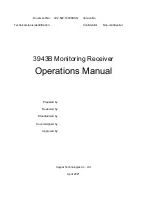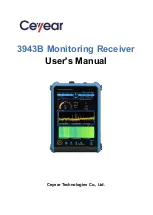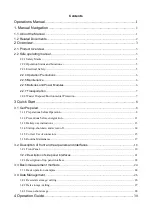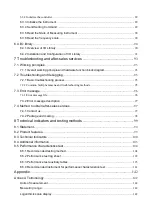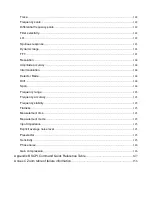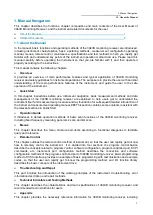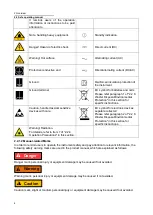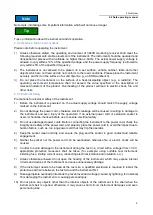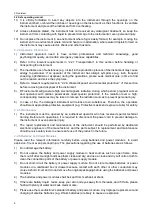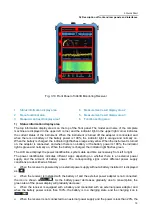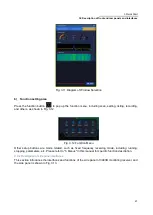
2 Overview
2.2 Safe operating manual
6
11) It is strictly forbidden to insert any objects into the instrument through the openings on the
instrument shell, or shield the notches or openings on the instrument, as their function is to ventilate
the instrument and prevent the instrument from overheating.
12) Unless otherwise stated, the instrument has not received any waterproof treatment, so keep the
instrument from contacting with liquid to prevent damage to the instrument or even personal injury.
13) Do not place the instrument in an environment where fog is easily formed, for example, moving the
instrument in a environment where cold and heat are in alternation, where water droplets formed on
the instrument may cause electric shock and other hazards.
2.2.4 Operation Precautions
1) Instrument operators need to have certain professional and technical knowledge, good
psychological quality, and certain emergency response capabilities.
2)
Refer to the relevant requirements in ―2.2.7 Transportation‖ in this section before handling or
transporting the instrument.
3) The inevitable use of substances (e.g. nickel) in the production process of the instrument may cause
allergy to personnel. If an operator of the instrument has allergic symptoms (e.g. rash, frequent
sneezing, ophthalmia or dyspnea) during the operations, please seek medical care in time to find
out the reason and solve the symptoms.
4)
Refer to relevant requirements in ―2.2.8 Waste disposal/ environmental protection‖ of this section
before removing and disposal of the instrument.
5) RF instruments will generate high electromagnetic radiation, during which period, pregnant women
and operators with cardiac pacemakers need special protection. If the radiation level is high,
corresponding measures may be taken to remove the radiation sources to prevent personal injury.
6) In case of fire, the damaged instrument will release toxic substances. Therefore, the operators
should wear appropriate protective equipment (e.g. Protective masks and exposure suits) for safety.
2.2.5 Maintenance
1) The instrument must be opened by an authorized operator who has received special technical
training. Before such operations, it is required to disconnect the power cord to prevent damage to
the instrument or even personal injury.
2) The repair, replacement and maintenance of the instrument should be performed by dedicated
electronic engineers of the manufacturer, and the parts subject to replacement and maintenance
should receive safety tests to ensure safe use of the product in the future.
2.2.6 Batteries and Power Modules
Please read the relevant information carefully before using batteries and power modules to avoid
explosion, fire or even personal injury. The precautions regarding the use of batteries are as follows.
1) Do not damage the battery.
2) Do not expose the battery and power supply module to heat sources such as open flame; store
them out of direct sunlight and keep them clean and dry; and use a clean and dry soft cotton cloth to
clean the connection ports of the battery or power supply module.
3) Do not short-circuit the battery or power supply module. Do not store multiple batteries or power
modules in a cardboard box or drawer because contact with each other or other conductors may
cause a short circuit; and do not remove the original packaging before using the batteries and power
modules.
4) The batteries and power modules shall be kept from mechanical shock.
5) If there are battery liquid leaks, keep your skin and eyes away from the leaks, and if it fails, please
flush with plenty of water and seek medical care.
6) Please use the manufacturer's standard battery and power module. Any improper replacement and
charging of alkaline batteries (e.g. lithium batteries) are likely to cause an explosion.
Содержание 3943B
Страница 2: ...3943B Monitoring Receiver User s Manual Ceyear Technologies Co Ltd...
Страница 4: ......

